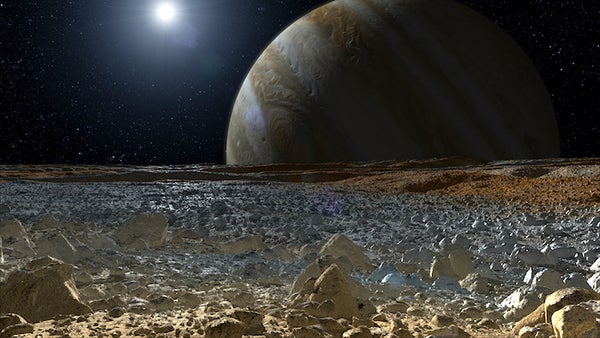This article was published in Scientific American’s former blog network and reflects the views of the author, not necessarily those of Scientific American
The planet Jupiter is a beast: Three-hundred-and-seventeen times the mass of the Earth, mostly made of metallic hydrogen, and at the center of an astonishing collective of orbiting natural bodies.
In fact, Jupiter's satellites form a shrunken version of a full planetary system: from the tightly bound larger Galilean moons (orbiting in their Laplacian mean-motion resonances, akin to places like TRAPPIST-1) to the remarkable array of smaller moonlets that encircle this world out to more than 30 million kilometers.
These bodies circle Jupiter in anywhere from about 7 hours to an astonishing 1,000 days.
On supporting science journalism
If you're enjoying this article, consider supporting our award-winning journalism by subscribing. By purchasing a subscription you are helping to ensure the future of impactful stories about the discoveries and ideas shaping our world today.
NASA's Juno spacecraft captured this set of time lapse images of the large Galilean moons during the spacecraft's approach in early 2016:
(Credit: NASA, JPL)
Until recently the cataloged satellites totaled 67 in number. But only the innermost 15 of these orbit Jupiter in a prograde sense (in the direction of the planet's spin). The rest are retrograde, and are likely captured objects - other pieces of the solar system's solid inventory that strayed into Jupiter's gravitational grasp.
That population of outer moons is mostly small stuff, only a few are 20-60 kilometers in diameter, most are barely 1-2 kilometers in size, and increasingly difficult to spot.
Now astronomers Scott Sheppard, David Tholen, and Chadwick Trujillo have added two more; bringing Jupiter's moon count to 69.
These additions are also about 1-2 km in size, and were spotted in images that were part of a survey for much more distant objects out in the Kuiper Belt. Jupiter just happened to be conveniently close in the sky at the time. The moons are S/2016 J1 and S/2017 J1, and are about 21 million km and 24 million km from Jupiter.
By themselves these small satellites don't amount to much. But they are a vivid reminder of the sheer abundance of material out there in our solar system, and of Jupiter's royal gravitational status.
